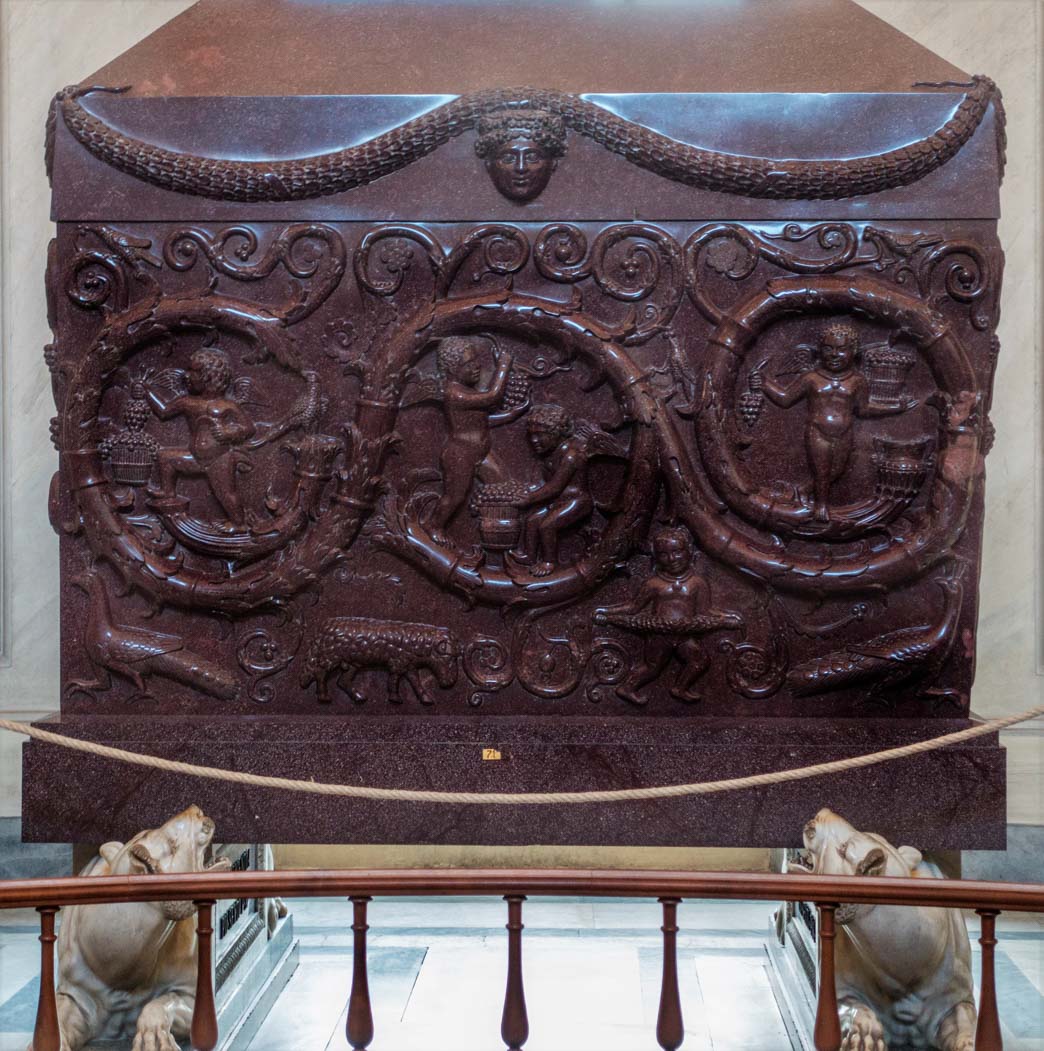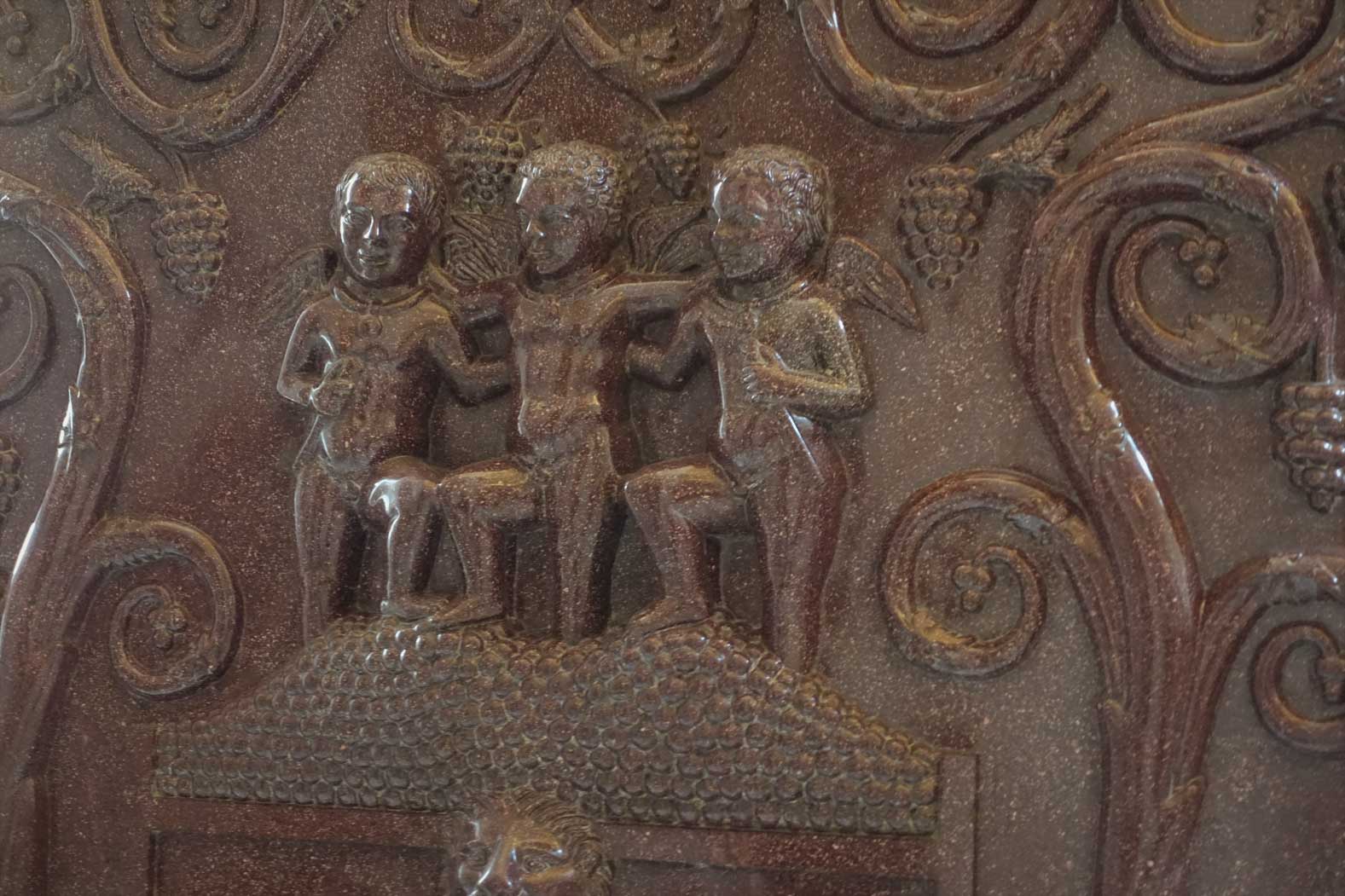
POSTACIE Roman emperors and their associates
Constantina – an imperial daughter and an enigmatic saint

In the year 335 Constantina married her cousin Hannibalianus, the ruler of Pont and Cappadocia. Two years after the death of her husband, who was murdered, most likely with a behind the scenes support of Constantine’s son – Constantius II, she returned to Rome. Probably during that time (between 337 and 351 A.D.) she thought of building an enormous cemetery basilica, on land which belonged to her family, near the final resting place of St. Agnes. Her main goal was to create her own mausoleum in it and this idea she put into effect, although in the meantime she was once again married off, this time to Constantius Gallus, the ruler of the Eastern Roman Empire and from that moment stayed in Antioch. She died on her way to Rome in the year 354. Her body was transported and laid to rest in a small chapel by the basilica, which she erected, later in a specifically designed for her (most likely still unfinished at the time) mausoleum. The sarcophagus that is present within is a copy of a splendid, maintained until the present in the Vatican Museums (Musei Vaticani) basalt tomb, which was built in her honor. In the VI century the mausoleum was transformed into a church (Santa Constanza), which saved the building from slow deterioration, which was the fate of the afore-mentioned cemetery basilica. The patron of the church was St. Constance – a figure semi-historic and semi-legendary.
The enigmatic figure of St. Constance, excellently shows how saint patrons were created at the time. The name of the owner of a building slowly became a name of a saint, accompanied by a colorful and convincing life story, devoted to a struggle for Christian ideals. In this case Constantina (changed into Constance) grew in stature from founder of the mausoleum to that of church patron. The legend, which was created around her, finds no confirmation in any historical sources, but that is not what legends are for. They say, that felled with a horrible, similar to leprosy skin disease she was miraculously healed thanks to the intercession of St. Agnes. Converted to Christianity, she built a church for her healer. The legend also adds, that since that time Constantina (Constance), despite being married, lived in celibacy. She raised her daughters to be good Christians and they too vowed chastity and established a monastery next to the church funded by their mother. The turn of the IV and V centuries was a time of a veritable plethora of groups and communities of virgins or widows, leading an aesthetic life, and perhaps from hence came the idea to make the enigmatic Constantina their patron.

Another, slightly modified legend, directed to all who seek support in problems with their complexion, tells of Constantina who had her face disfigured by leprosy, and therefore never uncovered it, while she lived her life desolate. All the products and treatments of imperial doctors came to nothing. Having found out that, the intercession of St. Agnes will help her in getting rid of the tiresome scars, in the place of the martyr’s burial she prayed and… a miracle happened. The ugly scars disappeared from Constantina’s cheeks. As gratitude Emperor Constantine erected an impressive basilica. Constance became a Christian, lived in celibacy and devoted herself to helping the ill. Still another legend, in which the virtuous life of the emperor’s daughter is also highlighted says, that after her fiancée did not keep his word and married another, Constance along with her daughters from her first marriage (Attica and Artemia), established a monastery at the Church of Sant’Agnese.
Może zainteresuje Cię również
The Council of Nicaea (325) – where, the Nicene Creed was created
Zgodnie z art. 13 ust. 1 i ust. 2 rozporządzenia Parlamentu Europejskiego i Rady (UE) 2016/679 z 27 kwietnia 2016 r. w sprawie ochrony osób fizycznych w związku z przetwarzaniem danych osobowych i w sprawie swobodnego przepływu takich danych oraz uchylenia dyrektywy 95/46/WE (RODO), informujemy, że Administratorem Pani/Pana danych osobowych jest firma: Econ-sk GmbH, Billbrookdeich 103, 22113 Hamburg, Niemcy
Przetwarzanie Pani/Pana danych osobowych będzie się odbywać na podstawie art. 6 RODO i w celu marketingowym Administrator powołuje się na prawnie uzasadniony interes, którym jest zbieranie danych statystycznych i analizowanie ruchu na stronie internetowej. Podanie danych osobowych na stronie internetowej http://roma-nonpertutti.com/ jest dobrowolne.